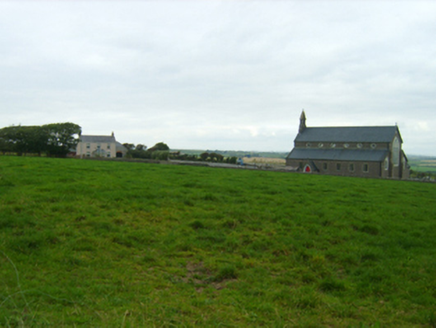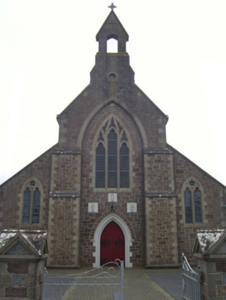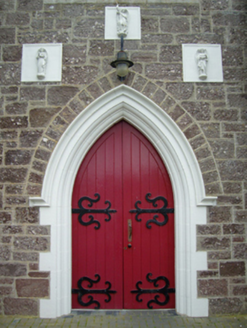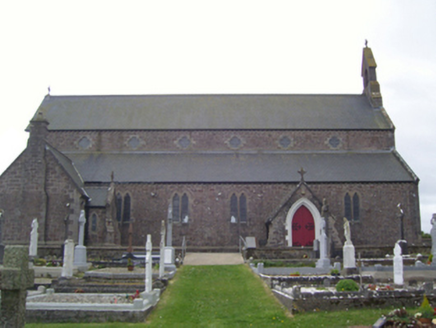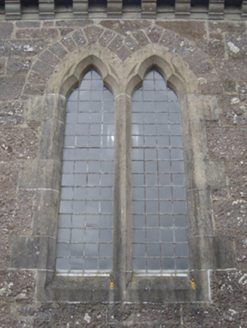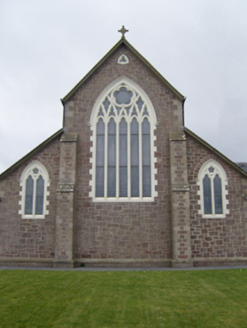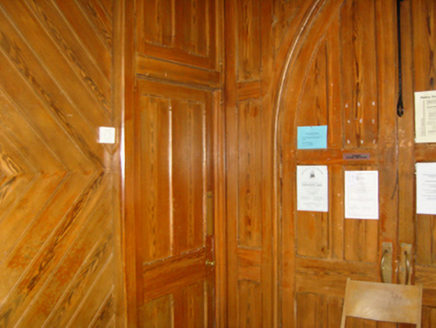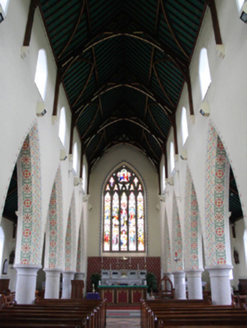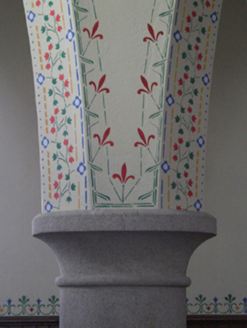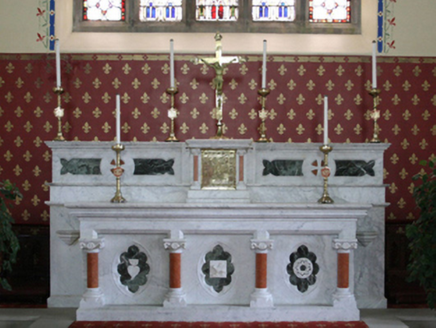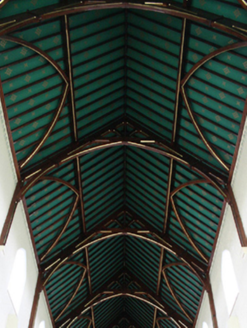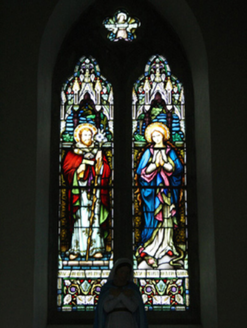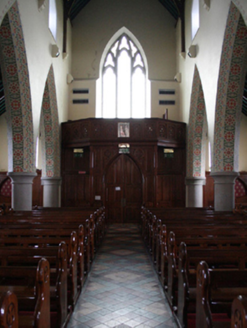Survey Data
Reg No
15704906
Rating
Regional
Categories of Special Interest
Architectural, Artistic, Historical, Social, Technical
Original Use
Church/chapel
In Use As
Church/chapel
Date
1895 - 1900
Coordinates
276661, 102934
Date Recorded
05/09/2007
Date Updated
--/--/--
Description
Detached six-bay double-height Catholic church, built 1896-8; dated 1898; opened 1899, on a rectangular plan comprising six-bay double-height nave opening into six-bay single-storey lean-to side aisles. Renovated, ----, with sanctuary reordered. "Restored", 1998. Pitched slate roof; lean-to slate roofs (side aisles), perforated crested clay ridge tiles, lichen-covered cut-granite coping to gables on cut-granite gabled corbel kneelers including lichen-covered cut-granite coping to gable to entrance (west) front on cut-granite gabled corbel kneelers with cruciform-detailed cut-granite buttressed gabled bellcote to apex, and cast-iron rainwater goods on cut-granite thumbnail beaded corbels retaining cast-iron downpipes. Part repointed tuck pointed snecked "Old Red Sandstone" walls on cut-granite chamfered cushion course on plinth with cut-granite flush quoins to corners. Quatrefoil window openings (clerestorey) with cut-granite block-and-start surrounds having chamfered reveals framing fixed-pane fittings having leaded stained glass panels. Trefoil-headed lancet window openings in bipartite arrangement (side aisles) with cut-granite block-and-start surrounds having chamfered reveals framing fixed-pane fittings having stained glass margins centred on square glazing bars. Pointed-arch window opening (east) with cut-granite millions, and cut-granite block-and-start surround having chamfered reveals with hood moulding framing storm glazing over fixed-pane fittings having leaded stained glass panels. Pointed-arch door opening to entrance (west) front, cut-granite block-and-start surround having bull nose-detailed reveals with hood moulding framing timber boarded double doors. Pointed-arch window opening (gable) with cut-granite mullions, and cut-granite block-and-start surround having chamfered reveals framing fixed-pane fittings having stained glass margins centred on square glazing bars. Interior including vestibule (west) with diagonal timber boarded walls, and timber boarded ceiling in timber frame; pointed-arch door opening into nave with timber panelled double doors; full-height interior open into roof "restored", 1998, with cruciform-perforated timber panelled choir gallery (west) on an engaged half-octagonal plan, encaustic tiled central aisle between cruciform-detailed timber pews, pointed-arch arcades on cut-granite drum pillars, carpeted stepped dais to sanctuary (east) reordered, ----, with octafoil-detailed cut-veined white marble high altar below stained glass "East Window" (----), stepped daises to side altars retaining carved timber railings with hexafoil-detailed cut-veined white marble altars below stained glass windows (----), exposed pointed-arch braced collared timber roof construction on "Cavetto"-detailed thumbnail beaded corbels with window braced rafters to stencilled ceiling on carved timber cornice, timber panelled confessional boxes (side aisles), timber boarded wainscoting with carved timber dado rail, Gothic-style timber stations between "cathedral glass" windows, and exposed strutted timber roof constructions on "Cavetto"-detailed thumbnail beaded corbels with wind braced rafters to ceilings on carved timber cornices. Set in relandscaped grounds with piers to perimeter having roll moulded gabled capping supporting replacement mild steel double gates.
Appraisal
A church erected under the aegis of Reverend William Synnott PP (1834-1911) representing an important component of the late nineteenth-century built heritage of south County Wexford with the architectural value of the composition, one evoking strong comparisons with the Augustus Welby Northmore Pugin (1812-2)-designed Catholic Church of Blessed Virgin Mary and Saint Alphonsus Liguori (1844-51) in Barntown (see 15703738), confirmed by such attributes as the compact rectilinear plan form, aligned along a liturgically-correct axis; the construction in a ruby-coloured "Old Red Sandstone" offset by silver-grey granite dressings not only demonstrating good quality workmanship, but also producing a lively two-tone palette; the slender profile of the coupled openings underpinning a "medieval" Gothic theme with the chancel defined by an elegant "East Window"; and the handsome bellcote embellishing the roof as a picturesque eye-catcher in the landscape. Having been well maintained, the elementary form and massing survive intact together with substantial quantities of the original fabric, both to the exterior and to the arcaded interior where contemporary joinery; a high altar modified in accordance with the liturgical reforms sanctioned by the Second Ecumenical Council of the Vatican (1962-5); and a vibrant "East Window", all highlight the artistic potential of the composition: meanwhile, an exposed timber roof construction pinpoints the engineering or technical dexterity of a church forming part of a self-contained group alongside an adjacent parochial house (see 15704907) with the resulting ecclesiastical ensemble making a pleasing visual statement in a rural street scene.
